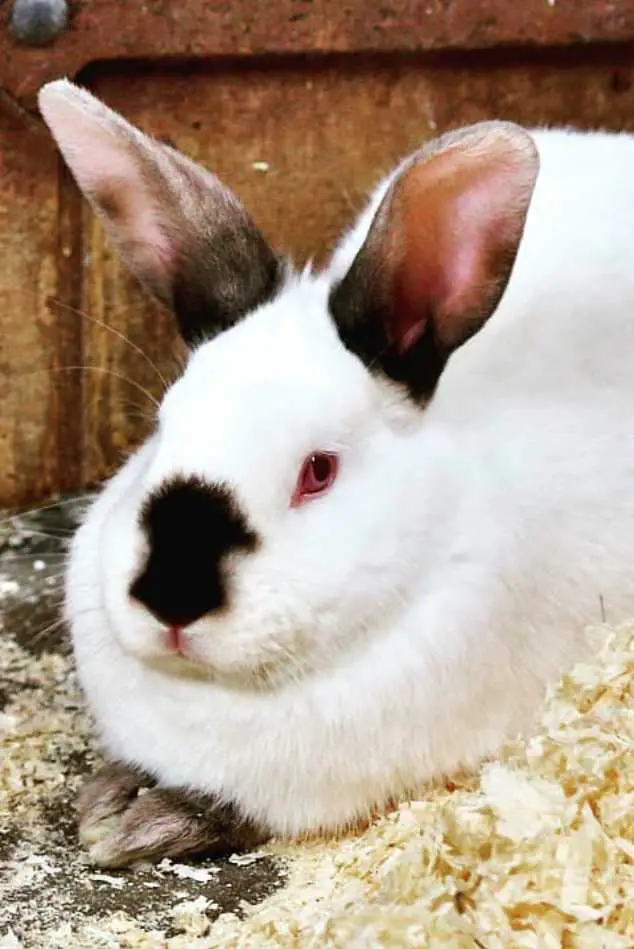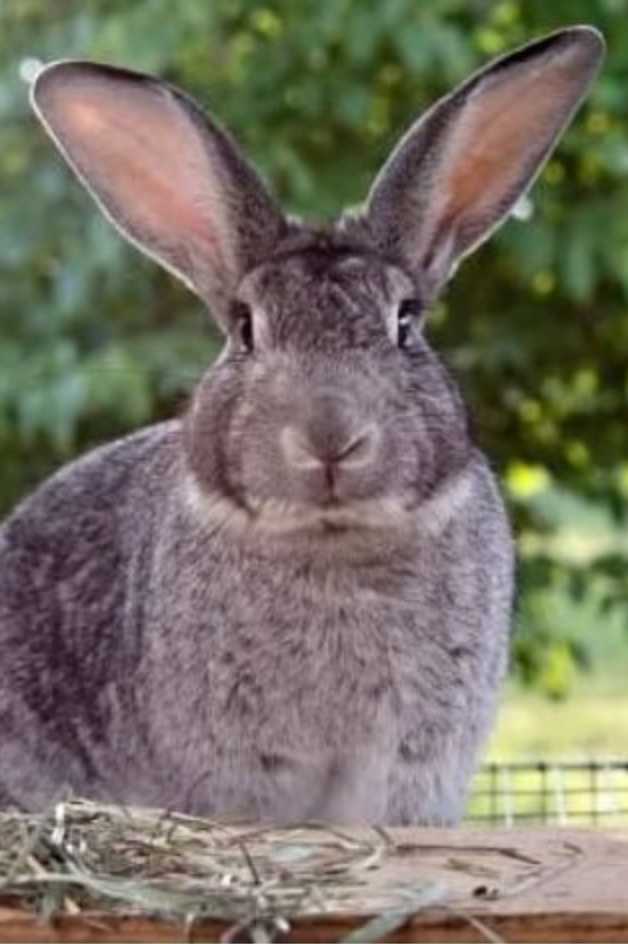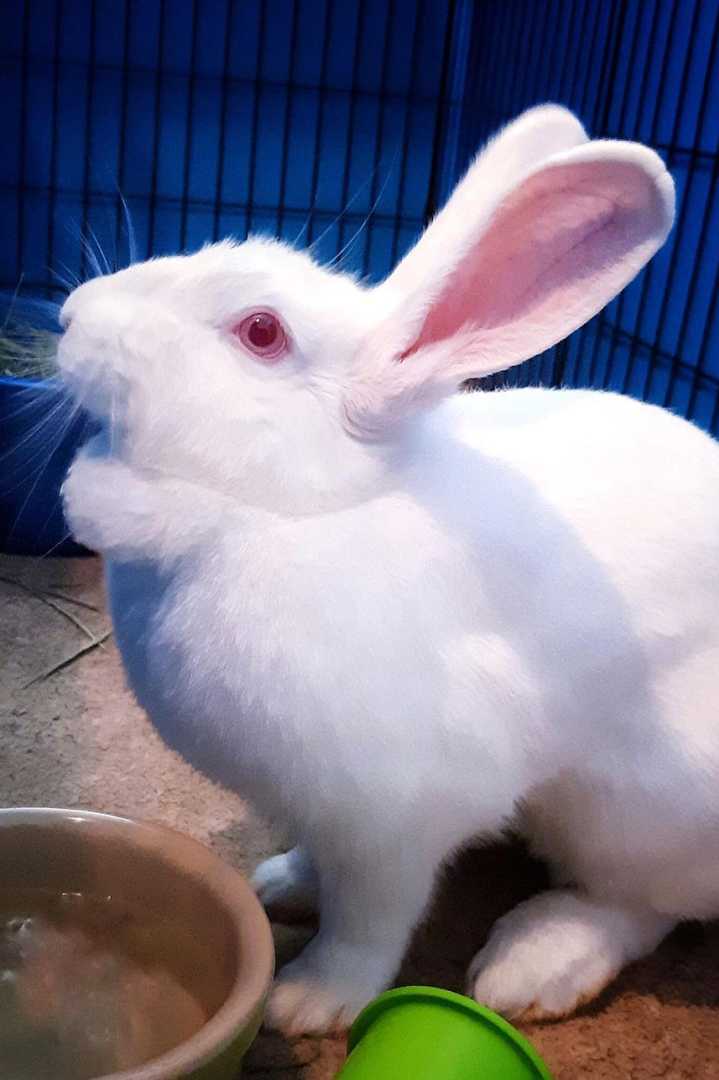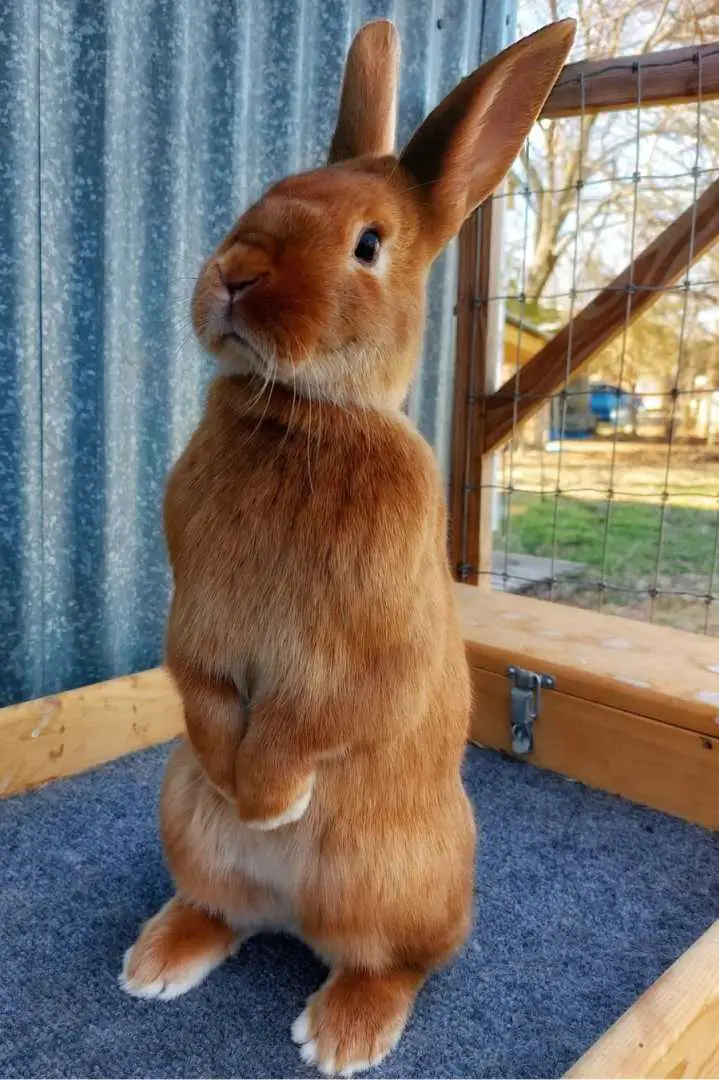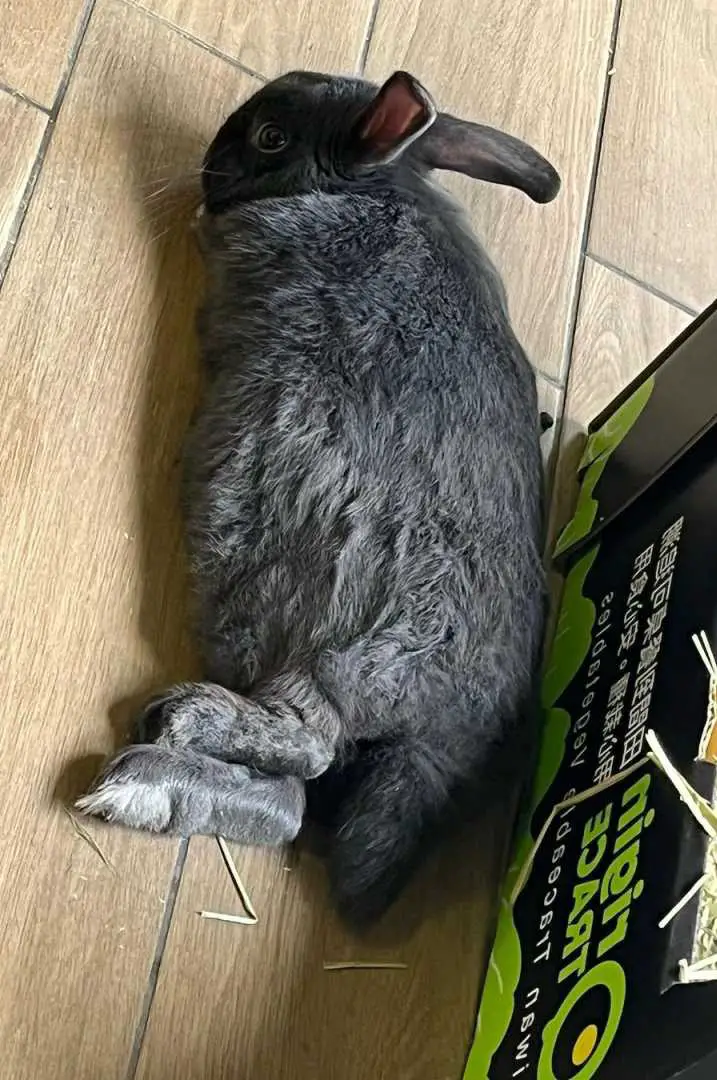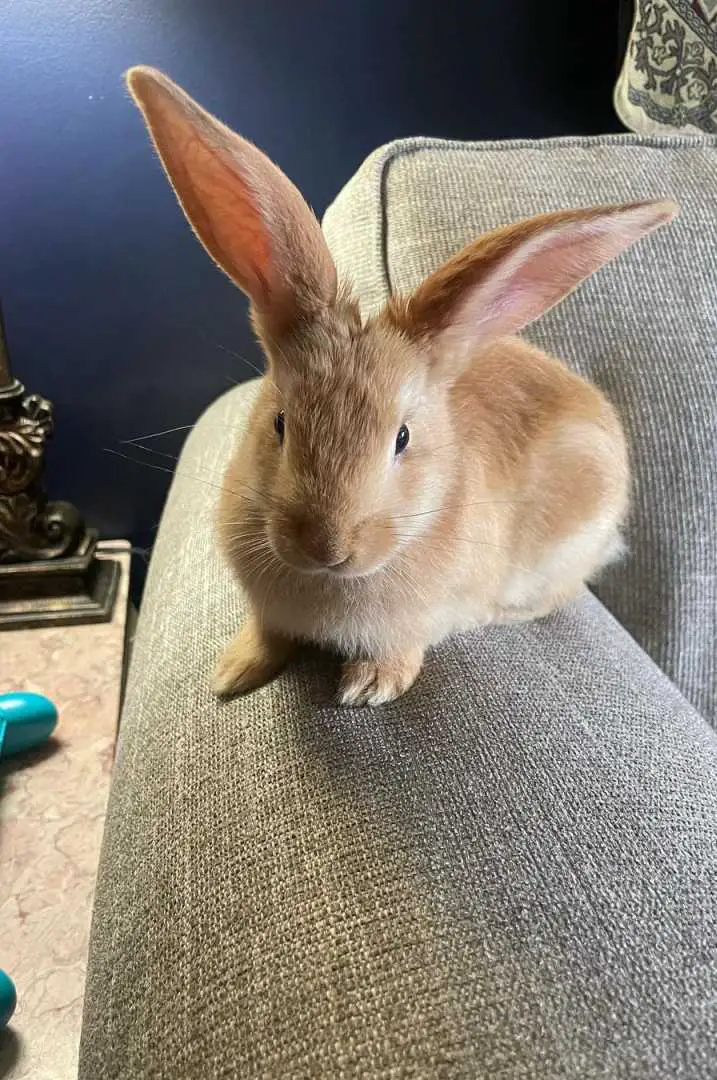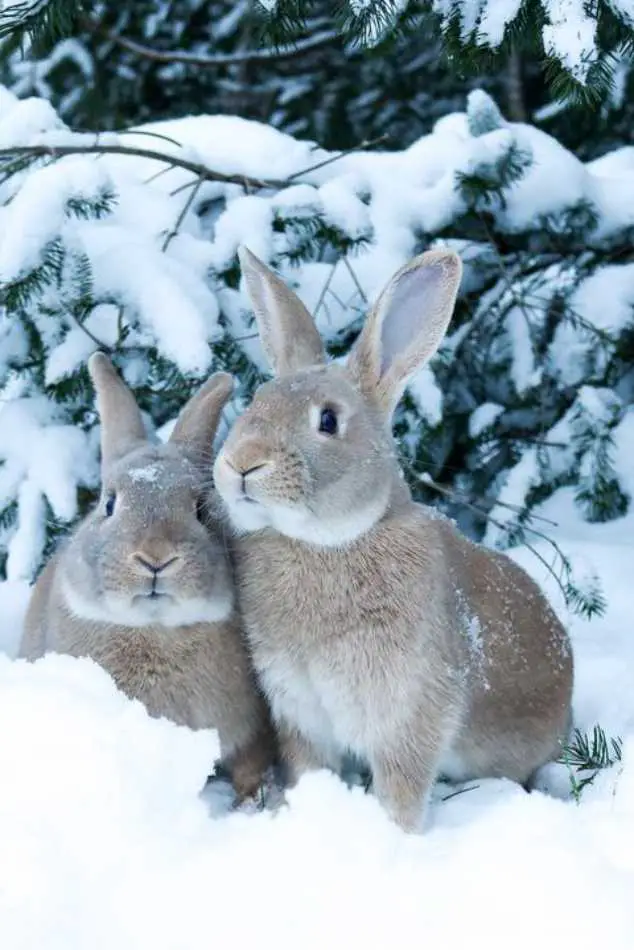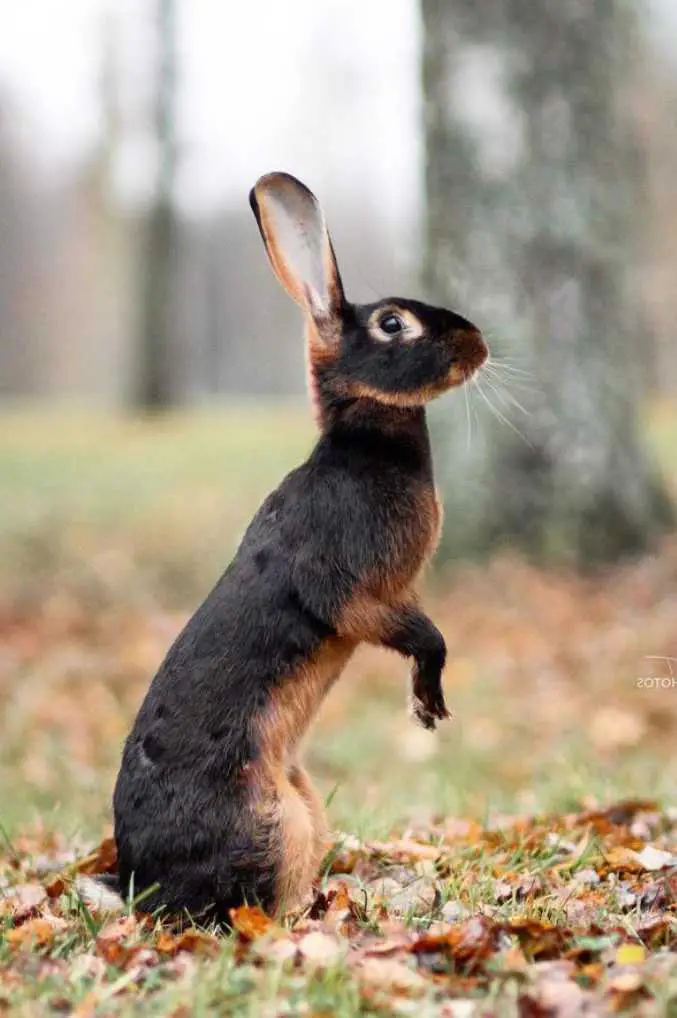Raising rabbits offers many benefits. One of these is meat production. Rabbit is classified as white meat with low-fat content. It is used in soups, stews, and roasts. However, you must select the correct breed to raise. Here are 10 meat rabbit breeds you could choose from.
California White
George West of California developed the Californian Rabbit breed in 1923. His goal was to create a breed with excellent meat and a rich, appealing coat.
West tried mixing a Himalayan with Chinchillas. He came up with a petite, chinchilla-colored buck. He then crossed the male with several New Zealand bunnies to boost its size. He worked with two Southern California breeders until they perfected the breed.
The Californian rabbit was recognized as a rabbit breed in 1939. It’s also known as California White. It’s now second only to New Zealand whites in popularity.
This rabbit sports a commercial body type. It weighs around 8-11 pounds. Its body is muscular with big shoulders and back legs.
Its coat is white featuring Himalayan-like patterns. Its ears are large, medium-length, and pointing up. Its eyes are pink, similar to an albino rabbit.
It makes an excellent family pet and exhibition rabbit. It’s easy to care for. In addition, it can live happily indoors and out, regardless of the weather.
This bunny is docile and kind. It may be shy and quiet at first. However, it will thrive in any family setting with proper socialization. Once it gets to know you, it becomes friendly and dislikes being left alone in its cage.
American Chinchilla
M.J.Dybowski, a French engineer, created the very first American Chinchilla Rabbit. It was first shown in April 1913 at Saint-Maur, France. This new breed became instantly popular because of its stunning coat.
The original American Chinchilla weighed only 5-7.5 pounds. American breeders developed this breed to a larger body for meat and fur.
The American Chinchilla Rabbit has a commercial body, weighing about 9-12 pounds when fully grown. Its body tends to be stocky since it’s originally for meat production. Chefs worldwide prefer to prepare and smoke this meat rabbit breed.
The soft, short, floppy coat of this rabbit requires little upkeep. Petting its head, ears, neck, and back is highly recommended. The American Chinchilla is a large, friendly breed. It weighs around 4-5 pounds more than the Standard Chinchilla.
This bunny gets along well with children and has a laid-back nature. It is suitable for any owner since it’s non-aggressive when handled. It can live either indoors or outdoors, but it doesn’t like to be bored. It cannot adapt to living in an apartment.
Some domestic breeds have fur-related problems. However, the American Chinchilla is immune to this and other inherited diseases. It’s generally healthy, with a lifespan of about 5-8 years.
New Zealand White
This meat rabbit breed is one of the most popular in the world. It’s usually 9-12 pounds in weight.
Images of the Easter Bunny are based on this very clever, snow-white rabbit with erect ears. Its crimson eyes and thick white fur are caused by inadequate melatonin pigment.
The New Zealand White originated in America. A Californian breeder who wanted to make lucrative meat and fur rabbit created it in 1916. This rabbit was destined for the meat and fur trade even from the beginning. However, it’s in widespread use in laboratories.
It has a joyful and sociable personality to be butchered or tested on. It’s an intelligent breed that is one of the easiest to train. The New Zealand White is an excellent pet choice. It’s less prone to be distant and aggressive than other rabbit breeds.
It’s peaceful and gentle. It’s usually happy to be touched and gets along well with kids and other pets.
This rabbit is broad and muscular. It has curved haunches and short, strong legs. Its head is large, with thick, erect ears and full cheeks. It has a dense medium-length coat with a soft undercoat and thicker guard hairs.
Satin Rabbit
Mr. Walter Huey’s produced the first brood of Satin rabbits. He did this as he attempted to perfect his Havana rabbits. His efforts resulted in satin gene-positive kits.
After a while, ARBA officially recognized “Satin Havanas” as a separate breed. The association approved the Satin rabbit in 1956 after several years of refinement.
This rabbit breed is one of the most beautiful domestic breeds. It features a peculiar satin coat, hence its name. A recessive gene gives its fur a transparent gloss.
This breed was originally available in two colors: white and a grayish tint. Now, it comes in more than 11 distinct shades.
No meat rabbit is more cold-resilient than this breed. It’s known for its thick fur. It often reaches around 12 pounds once fully grown. It takes a commercial body shape.
Its body tapers gradually from the back legs to the shoulders. It has large, rounded hindquarters and deep shoulders, loins, and backs. It has bright eyes and upright ears.
Satins are tinier and raised for fur in the United Kingdom. However, they are larger and grown for meat in America. Nevertheless, they are the most popular commercial breed among rabbit breeders.
The Satin rabbit makes a peaceful and quiet pet. Anyone of any age or experience with rabbits can keep it.
Blanc de Hotot
This is one of the largest rabbit breeds. It’s only the second rabbit breed to ever come from female breeding. Eugenie Bernhard first developed it during the 1900s.
Bernhard’s goal was to develop a rabbit with black eyes and a white coat for fur and meat. By 1912, she had bred the rabbit we know today. The thin black eye bands continued to bother Bernhard.
This rabbit’s name came from the French location where it was born. Hotot-en-Auge, in Normandy, France, translates to “Hotot White.”
This breed was introduced to Europe and North America in the early 1920s. These meat rabbits typically weigh around eleven pounds. They are huge, with black circles around their eyes.
This rabbit was developed for meat and fur. But it also makes an excellent family pet. It thrives when given lots of attention. It has superb hearing, vision, and smell, as well as strong survival instincts. It can survive up to ten years or even longer.
Unfortunately, the Livestock Conservancy lists this breed as a highly endangered species. This indicates fewer than 50 yearly registrations in America and less than 500 of this breed worldwide.
Silver Foxes
The Silver Fox rabbit is America’s third developed breed. Walter Garland of Ohio created it. It is a versatile breed that is raised for both fur and meat.
The American Heavyweight Silver was recognized as a breed in 1925. The name was altered to American Silver Fox in 1929 and then to Silver Fox.
The black and blue variants have always been recognized. However, due to a lack of numbers, the blues were eliminated from the ARBA standards in the 1970s.
The Silver Fox is a beautiful and friendly rabbit breed. This rabbit has unique long fur that goes up when stroked backward from the tail up to its head. It usually weighs around 10-12 pounds.
It’s incredibly cute. When it turns four months old, it has developed its silvering hue. It was named so because of its dense fur with white ticking, which resembled a fox’s pelt.
Silver Fox bunnies are sweet, gentle pets who make excellent surrogate mothers. These rabbits are outstanding display animals. They’re ideal pets for singles, couples, families, and seniors.
They are excellent low-maintenance pets. They enjoy being picked up and petted as long as they are well-socialized as young kits.
These bunnies have been a homesteader’s favorite for a long time. Unfortunately, it is a rare breed on the verge of extinction. The American Livestock Breeds Conservancy classifies it as “critical”.
Flemish Giants
The Flemish Giant has been around for a long time. Its origins can be traced back to Flanders in the 1500s. Rabbit breeders used a combination of fur and meat breeds to develop this huge rabbit.
It was first documented as a rabbit breed in 1860. Rabbit breeders imported this breed in America around the 1890s. During those times, rabbit husbandry was booming.
Flemish Giant breeders were correct that introducing this breed to America’s rabbit breeding would boost meat and fur production. It’s still used for fur and meat today. However, many individuals keep them as pets.
This rabbit is also known as the “king of rabbits.” It can grow big in a short period. Its weight can range from four pounds or more by seven or eight weeks.
This rabbit also has an insatiable hunger. Keeping it costs a little extra, but it typically weighs up to 20 pounds when slaughtered.
Flemish Giant rabbits have a particular appearance, and it’s not simply their size that distinguishes them from other rabbits. It is a lovely, affectionate friend. It can be maintained indoors and fits in nicely with the family.
Palomino Rabbits
This rabbit breed has gained popularity in the market, though not as much as other breeds. Unfortunately, the ALBC does not endorse the Palomino. However, ARBA acknowledged this breed in 1957.
Mark Youngs in Washington created this rabbit breed. In the late 1940s, he intended to establish a new rabbit breed. Youngs crossed various commercially-typed rabbits. He created a variety he called “Tawnies.” Eventually, it became known as the Palomino.
Palomino rabbits are still good meat rabbits. They are a huge kind of rabbit. Their bones are smaller than those of other varieties. Breeders benefit from a higher meat-to-bone ratio.
Their eyes are brown, and their ears are large and upright. They are available in two color varieties: Lynx and Golden. Their distinctive color makes them easy to spot.
Their gorgeous color variations make them appealing as show animals or eye-catching pets. They grow fast and are very hardy, weighing 8-11 pounds.
Palominos are gentle, kind, and friendly creatures. They enjoy being in the company of others. So, they make fantastic pets. They may even get along with youngsters.
However, they require a lot of time outside their cage due to their sociability. This ensures that they get enough exercise. Confining them will make them bored and depressed. This will cause them to have a shorter life.
Belgian Hare
The Belgian Hare is also a vulnerable breed. Now, its numbers are dwindling. It became an instant hit on the meat industry in America in the 1900s.
A single Belgian Hare could fetch up to $5,000 during their peak. J.P. Morgan even put a lot of money on breeding Belgian Hares to boost his fortunes. Now, you’ll find yourself with over-saturated markets because prices plummeted.
The rabbits’ bones are good, and the meat is thin. These bunnies are notorious for being difficult to breed since they are very active. They require a lot of space to prevent bad behavior. They reach maturity weighing between 6-9 pounds.
This rabbit is a beautiful domesticated rabbit resulting from selective breeding. It is attractive while also being intelligent and wary like wild hares.
The limbs of this rabbit breed are exceptionally lengthy. Its primary purpose was to develop a practical meat source, although it looks gorgeous.
Belgian Hares are a lovely companion breed. They are the only domesticated bunnies with a reddish-brown coat. They can also respond when their names are called and approach food.
Belgian rabbits are often lively and charming. You can have a good time with them. However, some are more apprehensive than others. Nonetheless, they have a playful nature, making them excellent pet bunnies.
Rex Rabbits
The fluffy Rex rabbit was created in France in the 1900s from wild rabbits. ARBA recognized the Rex when it arrived in the United States in 1924.
The Rex ranges from midsize to large. It weighs between 7-12 pounds when fully grown. It has a commercial body type, having a muscular frame and balanced features overall. The name came from rabbits bred exclusively for meat farms.
The Rex rabbit is a stunning creature. It has a thick and lustrous fur used in making linings and outerwear. It was developed originally for its fur. Its coat does not require much grooming.
It’s an excellent choice for a family seeking a gorgeous, warm bunny. You can anticipate this species to be gentle, friendly, and responsive to touch. It can provide delight to any home that accepts it as a pet.
The main problem with this breed is that its teeth will keep growing if it can’t grind them down naturally. It might penetrate its mouth and gums if its teeth are too long. It should be able to grind its teeth down by chewing crisp vegetables and hay.
Summary
Rabbits come in a variety of breeds. So, you should know which species are optimal for meat production. Consider the dressed weight, fur type, and butchering age.
Also, check the rate of how fast they gain weight. Be guided by the 10 meat rabbit breeds above to satisfy your meat demands.
